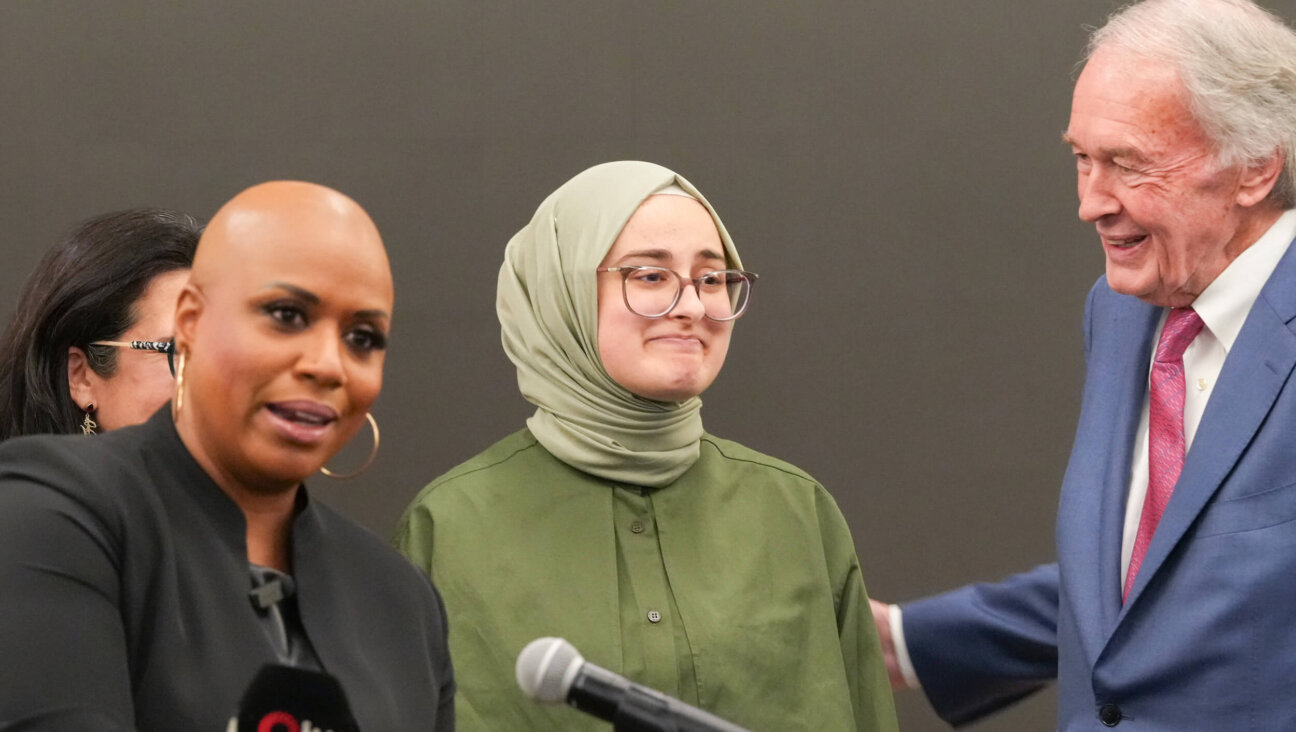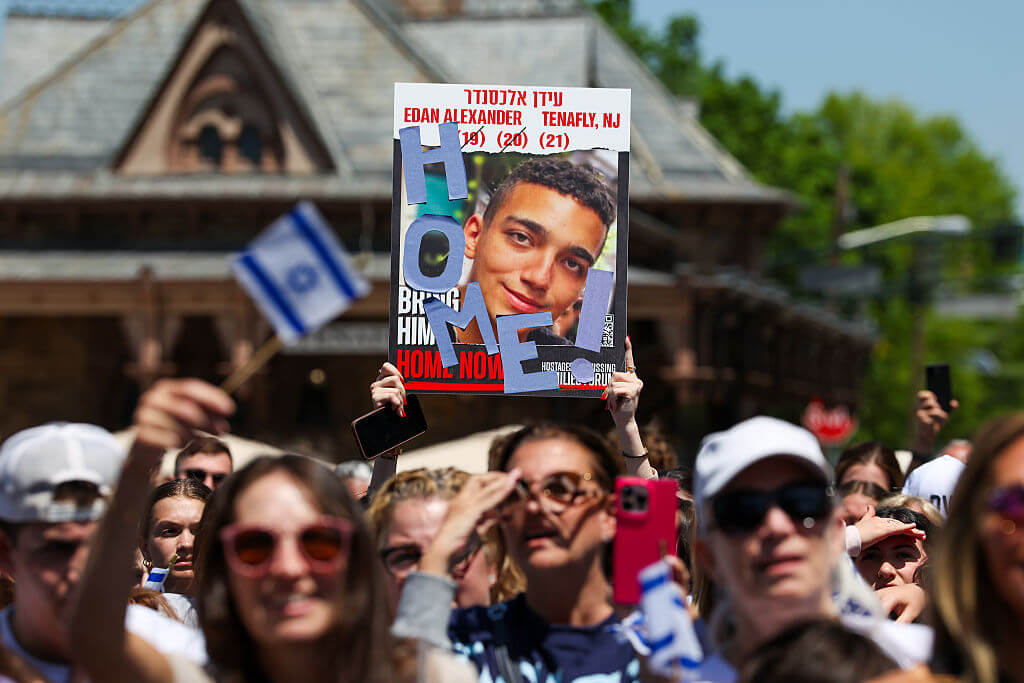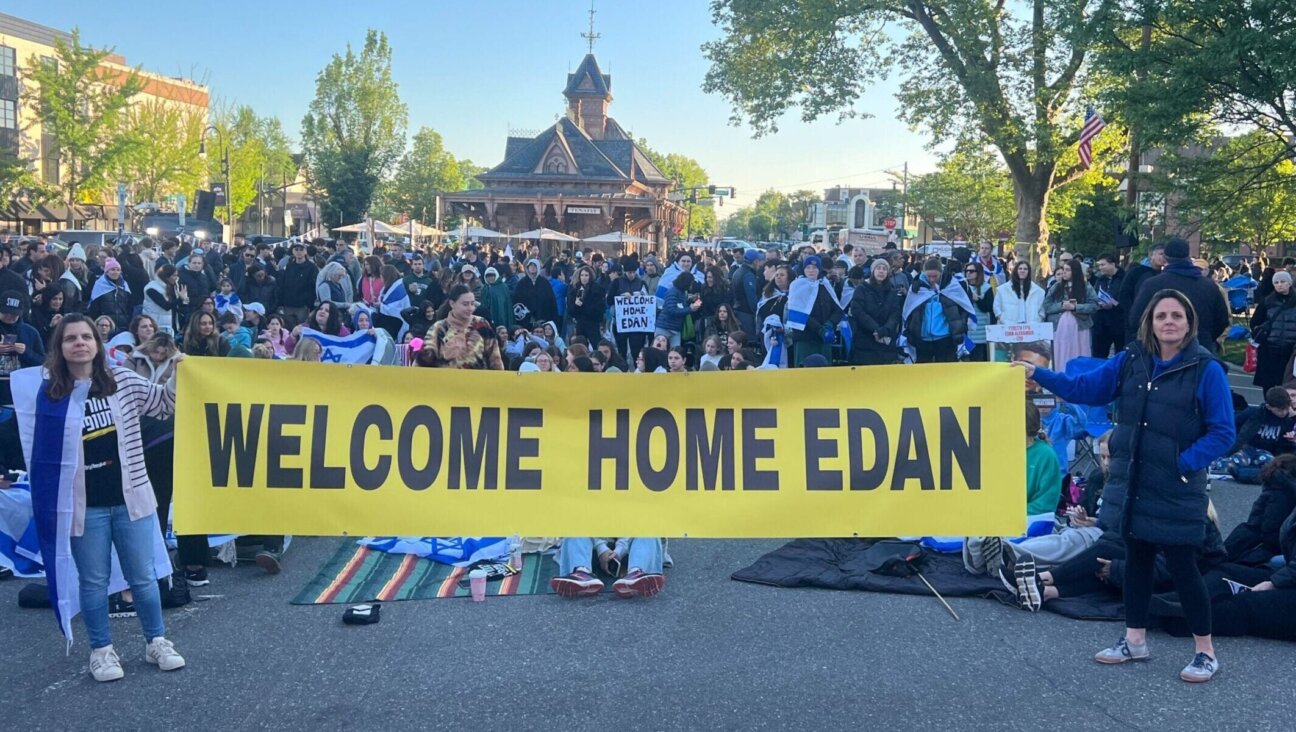If the walls in this Crown Heights house could talk, they’d speak Yiddish

Rabbi Mordechai Lightstone, social media editor for Chabad.org and the founder of Techtribe, discovered during a recent renovation that his walls were insulated with Yiddish newspaper. (Courtesy)
(JTA) — (New York Jewish Week via JTA) — Mordechai Lightstone and his wife, Chana, are renovating their house in Brooklyn’s Crown Heights — removing walls in the living room, dining room and hallway — so they’ll have plenty of space for guests when they are able to start hosting visitors again.
Lightstone, 37 — who describes himself in his Twitter bio as the “Rabbi for the Extremely Online” — runs Techtribe, an affiliate of Chabad Young Professionals that serves as a gathering place for young Jews who work in tech and digital media. He and his family regularly host Shabbat meals and other events in their home.
After the contractors removed the framing around the windows earlier this month, Lightstone noticed some newspapers stuffed into the walls and in the cracks of the building. But Lightstone was busy — and the papers were so faded, yellowed and brittle — that he didn’t take a second look.
That was, until he was showed his son the latest renovations — and the 11-year-old noticed that the words were printed in Yiddish. It was a delightful surprise to Lightstone, who then used a spatula to pry the papers carefully out of the wall.
The newspapers were so aged that one of the pages disintegrated the moment he removed it from the wall, Lightstone said. It’s hard to make out most of the words, let alone any clues as to which Yiddish-language newspaper it was or what year it was published. But Lightstone was able to translate a few fragments, one of them saying, “all the Jews gather.” A photo of the fragments includes what appears to be the word “geshribn,” or “it is written.”
“The house itself was built in Crown Heights in around 1920 or so, so I’m guessing [the papers were] about a hundred years old,” Lightstone told The New York Jewish Week. In the 1920s, as many as 30 Yiddish newspapers and magazines were published in New York.
Lightstone, who has lived in the house since 2016, guessed that the newspapers were used for insulation, not an uncommon way to inexpensively insulate a house.
He posted a photo of the newspaper insulation on social media, captioning it, “Visions of Crown Heights: The Walls of Crown Heights are Yiddish.”
“I guess the previous owner took the Rebbe’s words very seriously… בית מלא ספרים (a house full of books),” wrote one commenter on Twitter. He was referring to a popular teaching from the Lubavitcher Rebbe (Menachem Mendel Schneerson, the late leader of the Chabad movement), that it was a mitzvah to fill Jewish houses with Jewish books. Although Yiddish has faded as a Jewish lingua franca, it is still spoken by followers of Chabad and other haredi Orthodox movements.
This isn’t the first time Lightstone has lived in a house where construction revealed old newspapers and forgotten bits of history. In his childhood home in Los Angeles, his parents found newspapers stuffed underneath the floorboards from the early 20th century, advertising cars for $300 (about $9,500 today — still a bargain!).
The father of five was named to the Jewish Week’s 36 under 36 list of young Jewish leaders in 2021. In addition to running Techtribe, Lightstone is also the social media editor of Chabad.org. He often speaks and writes about the potential for positivity and education the internet can provide, serving as a TED resident in 2018 where he gave a TED Talk titled, “Illuminating modern life with ancient wisdom.”
So perhaps it’s not surprising that Lightstone found metaphorical significance in his discovery of the Yiddish newspapers. “It shows the house has, if not continuous, at least a hundred years of Jewish history in it,” he said. “If you look down inside, you may find those Yiddish letters inside of every house and inside of every person.”
—
The post If the walls in this Crown Heights house could talk, they’d speak Yiddish appeared first on Jewish Telegraphic Agency.
The Forward is free to read, but it isn’t free to produce

I hope you appreciated this article. Before you go, I’d like to ask you to please support the Forward.
Now more than ever, American Jews need independent news they can trust, with reporting driven by truth, not ideology. We serve you, not any ideological agenda.
At a time when other newsrooms are closing or cutting back, the Forward has removed its paywall and invested additional resources to report on the ground from Israel and around the U.S. on the impact of the war, rising antisemitism and polarized discourse.
This is a great time to support independent Jewish journalism you rely on. Make a gift today!
— Rachel Fishman Feddersen, Publisher and CEO
Support our mission to tell the Jewish story fully and fairly.
Most Popular
- 1

Fast Forward Ye debuts ‘Heil Hitler’ music video that includes a sample of a Hitler speech
- 2

Opinion It looks like Israel totally underestimated Trump
- 3

Culture Is Pope Leo Jewish? Ask his distant cousins — like me
- 4

Fast Forward Student suspended for ‘F— the Jews’ video defends himself on antisemitic podcast
In Case You Missed It
-

News In Edan Alexander’s hometown in New Jersey, months of fear and anguish give way to joy and relief
-

Fast Forward What’s next for suspended student who posted ‘F— the Jews’ video? An alt-right media tour
-

Opinion Despite Netanyahu, Edan Alexander is finally free
-

Opinion A judge just released another pro-Palestinian activist. Here’s why that’s good for the Jews
-
Shop the Forward Store
100% of profits support our journalism
Republish This Story
Please read before republishing
We’re happy to make this story available to republish for free, unless it originated with JTA, Haaretz or another publication (as indicated on the article) and as long as you follow our guidelines.
You must comply with the following:
- Credit the Forward
- Retain our pixel
- Preserve our canonical link in Google search
- Add a noindex tag in Google search
See our full guidelines for more information, and this guide for detail about canonical URLs.
To republish, copy the HTML by clicking on the yellow button to the right; it includes our tracking pixel, all paragraph styles and hyperlinks, the author byline and credit to the Forward. It does not include images; to avoid copyright violations, you must add them manually, following our guidelines. Please email us at [email protected], subject line “republish,” with any questions or to let us know what stories you’re picking up.















